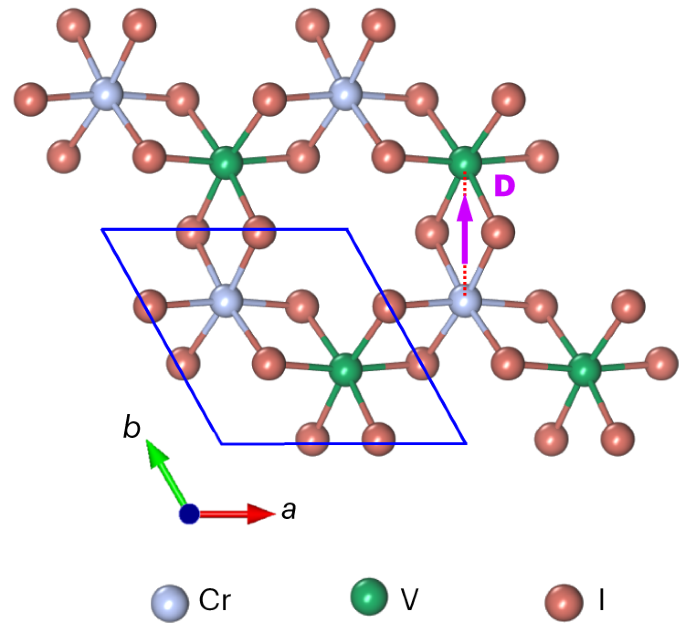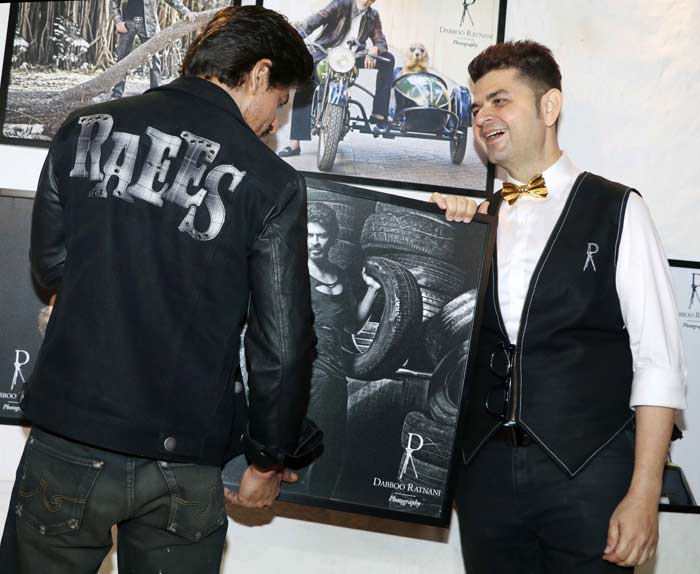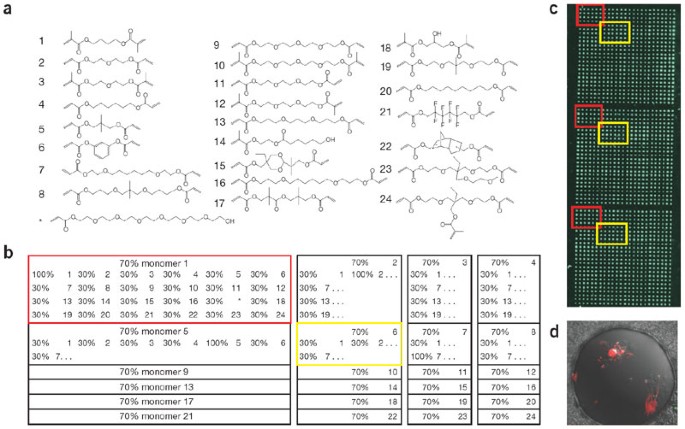
- Select a language for the TTS:
- UK English Female
- UK English Male
- US English Female
- US English Male
- Australian Female
- Australian Male
- Language selected: (auto detect) - EN
Play all audios:
ABSTRACT The whorls of localized moments in chiral magnetic structures, such as skyrmions, lead to a quantized topological charge, which may make them useful as next-generation information
bits. So far, the most reliable way to detect the existence of skyrmions is by using the topological Hall effect, which stems from electron scattering by the emergent magnetic field
manifesting the topological charge. Here we employ two-dimensional magnets to establish a magneto-optical hallmark of skyrmions, which we call the topological Kerr effect, using the recently
discovered ferromagnet CrVI6 as a material platform. The Kerr angle hysteresis loop of this non-centrosymmetric system exhibits two antisymmetric bumps that are absent in the
centrosymmetric CrI3 and VI3. We develop a minimal model to further identify the bumps as direct manifestations of the topological charge, thereby providing a magneto-optical fingerprint of
skyrmions with broader applicability. Access through your institution Buy or subscribe This is a preview of subscription content, access via your institution ACCESS OPTIONS Access through
your institution Access Nature and 54 other Nature Portfolio journals Get Nature+, our best-value online-access subscription $29.99 / 30 days cancel any time Learn more Subscribe to this
journal Receive 12 print issues and online access $259.00 per year only $21.58 per issue Learn more Buy this article * Purchase on SpringerLink * Instant access to full article PDF Buy now
Prices may be subject to local taxes which are calculated during checkout ADDITIONAL ACCESS OPTIONS: * Log in * Learn about institutional subscriptions * Read our FAQs * Contact customer
support SIMILAR CONTENT BEING VIEWED BY OTHERS MULTISTEP TOPOLOGICAL TRANSITIONS AMONG MERON AND SKYRMION CRYSTALS IN A CENTROSYMMETRIC MAGNET Article 01 April 2024 TOPOLOGICAL ORBITAL HALL
EFFECT CAUSED BY SKYRMIONS AND ANTIFERROMAGNETIC SKYRMIONS Article Open access 11 January 2025 TOPOLOGICAL MAGNETO-OPTICAL EFFECT FROM SKYRMION LATTICE Article Open access 05 September 2023
DATA AVAILABILITY Source data are provided with this paper. All other data that support the plots within this paper and other findings of this study are available from the corresponding
author upon reasonable request. CODE AVAILABILITY The Spirit code and manual are available at https://spirit-code.github.io/. Codes for reproducing the simulation results are available from
the corresponding author upon reasonable request. REFERENCES * Mühlbauer, S. et al. Skyrmion lattice in a chiral magnet. _Science_ 323, 915–919 (2009). ADS Google Scholar * Yu, X. Z. et
al. Real-space observation of a two-dimensional skyrmion crystal. _Nature_ 465, 901–904 (2010). ADS Google Scholar * Nagaosa, N. & Tokura, Y. Topological properties and dynamics of
magnetic skyrmions. _Nat. Nanotechnol._ 8, 899–911 (2013). ADS Google Scholar * Göbel, B., Mertig, I. & Tretiakov, O. A. Beyond skyrmions: review and perspectives of alternative
magnetic quasiparticles. _Phys. Rep._ 895, 1–28 (2021). ADS MathSciNet Google Scholar * Tokura, Y. & Kanazawa, N. Magnetic skyrmion materials. _Chem. Rev._ 121, 2857 (2021). Google
Scholar * Back, C. et al. The 2020 skyrmionics roadmap. _J. Phys. D: Appl. Phys._ 53, 363001 (2020). ADS Google Scholar * Fert, A., Cros, V. & Sampaio, J. Skyrmions on the track.
_Nat. Nanotechnol._ 8, 152–156 (2013). ADS Google Scholar * Taguchi, Y., Oohara, Y., Yoshizawa, H., Nagaosa, N. & Tokura, Y. Spin chirality, Berry phase, and anomalous Hall effect in a
frustrated ferromagnet. _Science_ 291, 2573–2576 (2001). ADS Google Scholar * Bruno, P., Dugaev, V. K. & Taillefumier, M. Topological Hall effect and Berry phase in magnetic
nanostructures. _Phys. Rev. Lett._ 93, 096806 (2004). ADS Google Scholar * Neubauer, A. et al. Topological Hall effect in the A phase of MnSi. _Phys. Rev. Lett._ 102, 186602 (2009). ADS
Google Scholar * Kurumaji, T. et al. Skyrmion lattice with a giant topological Hall effect in a frustrated triangular-lattice magnet. _Science_ 365, 914–918 (2019). ADS Google Scholar *
Nagaosa, N., Sinova, J., Onoda, S., MacDonald, A. H. & Ong, N. P. Anomalous Hall effect. _Rev. Mod. Phys._ 82, 1539–1592 (2010). ADS Google Scholar * Xiao, D., Chang, M.-C. & Niu,
Q. Berry phase effects on electronic properties. _Rev. Mod. Phys._ 82, 1959–2007 (2010). ADS MathSciNet Google Scholar * Huang, S. X. & Chien, C. L. Extended skyrmion phase in
epitaxial FeGe(111) thin films. _Phys. Rev. Lett._ 108, 267201 (2012). ADS Google Scholar * Nayak, A. K. et al. Magnetic antiskyrmions above room temperature in tetragonal Heusler
materials. _Nature_ 548, 561–566 (2017). ADS Google Scholar * Huang, B. et al. Layer-dependent ferromagnetism in a van der Waals crystal down to the monolayer limit. _Nature_ 546, 270–273
(2017). ADS Google Scholar * Gong, C. et al. Discovery of intrinsic ferromagnetism in two-dimensional van der Waals crystals. _Nature_ 546, 265–269 (2017). ADS Google Scholar * Tian, S.
et al. Ferromagnetic van der Waals crystal VI3. _J. Am. Chem. Soc._ 141, 5326–5333 (2019). Google Scholar * Dzyaloshinsky, I. A thermodynamic theory of “weak” ferromagnetism of
antiferromagnetics. _J. Phys. Chem. Solids_ 4, 241–255 (1958). ADS Google Scholar * Moriya, T. Anisotropic superexchange interaction and weak ferromagnetism. _Phys. Rev._ 120, 91–98
(1960). ADS Google Scholar * Zhang H., Cui P., Xu X. & Zhang Z. A family tree of two-dimensional magnetic materials with tunable topological properties. Preprint at
https://doi.org/10.48550/arXiv.2112.10924 (2021). * Fayazi Y., Jacobsson L. & Gustafsson F. _First Principles Studies of 2D Magnets_. BSc thesis, Uppasala Univ. (2022). * Zhang, H.,
Yang, W., Cui, P., Xu, X. & Zhang, Z. Prediction of monolayered ferromagnetic CrMnI6 as an intrinsic high-temperature quantum anomalous Hall system. _Phys. Rev. B_ 102, 115413 (2020).
ADS Google Scholar * Zhang, S. et al. Giant Dzyaloshinskii–Moriya interaction, strong XXZ-type biquadratic coupling, and bimeronic excitations in the two-dimensional CrMnI6 magnet. _npj
Quantum Mater_ 8, 38 (2023). ADS Google Scholar * Moriya, T. New mechanism of anisotropic superexchange interaction. _Phys. Rev. Lett._ 4, 228–230 (1960). ADS Google Scholar * Powalla,
L. et al. Seeding and emergence of composite skyrmions in a van der Waals magnet. _Adv. Mater._ 35, 2208930 (2023). Google Scholar * Wang, X. R., Hu, X.-C. & Sun, Z.-Z. Topological
equivalence of stripy states and skyrmion crystals. _Nano Lett._ 23, 3954–3962 (2023). ADS Google Scholar * Wang, H. et al. Characteristics and temperature-field-thickness evolutions of
magnetic domain structures in van der Waals magnet Fe3GeTe2 nanolayers. _Appl. Phys. Lett._ 116, 192403 (2020). ADS Google Scholar * Lu, E. et al. Analytic theory for Néel skyrmion size,
accounting for finite film thickness. _J. Magn. Magn. Mater._ 584, 171044 (2023). Google Scholar * Adams, T. et al. Long-wavelength helimagnetic order and skyrmion lattice phase in
Cu2OSeO3. _Phys. Rev. Lett._ 108, 237204 (2012). ADS Google Scholar * Yu, X. Z. et al. Near room-temperature formation of a skyrmion crystal in thin-films of the helimagnet FeGe. _Nat.
Mater._ 10, 106–109 (2011). ADS Google Scholar * Bhowmick, T. K., De, A. & Lake, R. K. High figure of merit magneto-optics from interfacial skyrmions on topological insulators. _Phys.
Rev. B_ 98, 024424 (2018). ADS Google Scholar * Sorn, S., Yang, L. & Paramekanti, A. Resonant optical topological Hall conductivity from skyrmions. _Phys. Rev. B_ 104, 134419 (2021).
ADS Google Scholar * Martin, I. & Batista, C. D. Itinerant electron-driven chiral magnetic ordering and spontaneous quantum Hall effect in triangular lattice models. _Phys. Rev. Lett._
101, 156402 (2008). ADS Google Scholar * Mera Acosta, C., Yuan, L., Dalpian, G. M. & Zunger, A. Different shapes of spin textures as a journey through the Brillouin zone. _Phys. Rev.
B_ 104, 104408 (2021). ADS Google Scholar * Weyl, H. Elektron und Gravitation. I. _Z. Physik_ 56, 330–352 (1929). ADS Google Scholar * Šabani, D., Bacaksiz, C. & Milošević, M. V. Ab
initio methodology for magnetic exchange parameters: generic four-state energy mapping onto a Heisenberg spin Hamiltonian. _Phys. Rev. B_ 102, 014457 (2020). ADS Google Scholar * Gilbert,
T. L. A phenomenological theory of damping in ferromagnetic materials. _IEEE Trans. Magn._ 40, 3443–3449 (2004). ADS Google Scholar * Müller, G. P. et al. Spirit: multifunctional framework
for atomistic spin simulations. _Phys. Rev. B_ 99, 224414 (2019). ADS Google Scholar * Legrand, W. et al. Room-temperature stabilization of antiferromagnetic skyrmions in synthetic
antiferromagnets. _Nat. Mater._ 19, 34–42 (2020). ADS Google Scholar * Park, T.-E. et al. Néel-type skyrmions and their current-induced motion in van der Waals ferromagnet-based
heterostructures. _Phys. Rev. B_ 103, 104410 (2021). ADS Google Scholar * Sivadas, N., Okamoto, S. & Xiao, D. Gate-controllable magneto-optic Kerr effect in layered collinear
antiferromagnets. _Phys. Rev. Lett._ 117, 267203 (2016). ADS Google Scholar * Schulz, T. et al. Emergent electrodynamics of skyrmions in a chiral magnet. _Nat. Phys._ 8, 301–304 (2012).
Google Scholar * Xiao, J., Zangwill, A. & Stiles, M. D. Spin-transfer torque for continuously variable magnetization. _Phys. Rev. B_ 73, 054428 (2006). ADS Google Scholar * Mak, K. F.
et al. Measurement of the optical conductivity of graphene. _Phys. Rev. Lett._ 101, 196405 (2008). ADS Google Scholar * Kim, M. H. et al. Determination of the infrared complex
magnetoconductivity tensor in itinerant ferromagnets from Faraday and Kerr measurements. _Phys. Rev. B_ 75, 214416 (2007). ADS Google Scholar * Valdés Aguilar, R. et al. Terahertz response
and colossal Kerr rotation from the surface states of the topological insulator Bi2Se3. _Phys. Rev. Lett._ 108, 087403 (2012). ADS Google Scholar * Feng, W., Guo, G.-Y., Zhou, J., Yao, Y.
& Niu, Q. Large magneto-optical Kerr effect in noncollinear antiferromagnets Mn3X (X = Rh, Ir, Pt). _Phys. Rev. B_ 92, 144426 (2015). ADS Google Scholar * Feng, W. et al. Topological
magneto-optical effects and their quantization in noncoplanar antiferromagnets. _Nat. Commun._ 11, 118 (2020). ADS Google Scholar * Higo, T. et al. Large magneto-optical Kerr effect and
imaging of magnetic octupole domains in an antiferromagnetic metal. _Nat. Photon._ 12, 73–78 (2018). ADS Google Scholar * Liu, J., Singh, A., Kuerbanjiang, B., Barnes, C. H. W. &
Hesjedal, T. Kerr effect anomaly in magnetic topological insulator superlattices. _Nanotechnology_ 31, 434001 (2020). Google Scholar * Bartram, F. M. et al. Anomalous Kerr effect in SrRuO3
thin films. _Phys. Rev. B_ 102, 140408 (2020). ADS Google Scholar * Kato, Y. D., Okamura, Y., Hirschberger, M., Tokura, Y. & Takahashi, Y. Topological magneto-optical effect from
skyrmion lattice. _Nat. Commun._ 14, 5416 (2023). ADS Google Scholar * Zhang, Y. et al. Glovebox-assisted magnetic force microscope for studying air-sensitive samples in a cryogen-free
magnet. _Rev. Sci. Instrum._ 95, 013701 (2024). ADS Google Scholar * Depondt, P. & Mertens, F. G. Spin dynamics simulations of two-dimensional clusters with Heisenberg and
dipole–dipole interactions. _J. Phys. Condens. Matter_ 21, 336005 (2009). Google Scholar * Chubykalo, O., Hannay, J. D., Wongsam, M., Chantrell, R. W. & Gonzalez, J. M. Langevin dynamic
simulation of spin waves in a micromagnetic model. _Phys. Rev. B_ 65, 184428 (2002). ADS Google Scholar Download references ACKNOWLEDGEMENTS We thank C. Gao, M. Tian, H. Du, J. Li, X. Yu,
J. Wrachtrup, Q. Sun, Y. Zhang, Y. Wang, X. Wang and many other colleagues from their groups for various suggestions and efforts on potential direct detection of skyrmions in the newly
synthesized magnet of CrVI6. This work was supported by the National Natural Science Foundation of China (Grant Nos. 11574316, 11722435, 11804210, 11904350, 11974323, 12374458, U2032218,
12274276, 51627901 and U1932216), the Innovation Programme for Quantum Science and Technology (Grant No. 2021ZD0302800), the Strategic Priority Research Programme of Chinese Academy of
Sciences (CAS) (Grant No. XDB0510200), the Anhui Initiative in Quantum Information Technologies (Grant No. AHY170000), the Anhui Provincial Natural Science Foundation (Grant. No.
2008085QA30) and National Synchrotron Radiation Laboratory (KY2060000177). C.L. and Z.S. gratefully acknowledge financial support from the National Key R&D Programme of China (Grant Nos.
2021YFA1600200, 2017YFA0303603 and 2023YFA1607701), the Plan for Major Provincial Science & Technology Project (Grant No. 202003a05020018), the Key Research Programme of Frontier
Sciences, CAS (Grant No. QYZDB-SSW-SLH011), and the Users with Excellence Programme of Hefei Science Center, CAS (Grant No. 2021HSC-UE009). A portion of this work was performed on the Steady
High Magnetic Field Facilities, High Magnetic Field Laboratory, CAS, and supported by the High Magnetic Field Laboratory of Anhui Province. This research was also partially carried out at
the USTC Center for Micro and Nanoscale Research and Fabrication. AUTHOR INFORMATION Author notes * These authors contributed equally: Xiaoyin Li, Caixing Liu, Ying Zhang. AUTHORS AND
AFFILIATIONS * International Center for Quantum Design of Functional Materials (ICQD), and Hefei National Laboratory, University of Science and Technology of China, Hefei, China Xiaoyin Li,
Shunhong Zhang, Dazhi Hou, Ping Cui & Zhenyu Zhang * High Magnetic Field Laboratory, HFIPS, Chinese Academy of Sciences, Hefei, China Caixing Liu, Yuchen Zhang, Wenjie Meng, De Hou,
Qingyou Lu & Zhigao Sheng * Department of Materials Science & Engineering, CAS Key Lab of Materials for Energy Conversion, Anhui Laboratory of Advanced Photon Science and Technology,
University of Science and Technology of China, Hefei, China Ying Zhang, Fanyang Huang, Ruiguo Cao & Bin Xiang * Key Laboratory of Magnetic Molecules and Magnetic Information Materials
of the Ministry of Education and Research Institute of Materials Science, Shanxi Normal University, Taiyuan, China Huisheng Zhang & Xiaohong Xu * Hefei National Laboratory for Physical
Sciences at the Microscale and Anhui Laboratory of Advanced Photon Science and Technology, University of Science and Technology of China, Hefei, China Yuchen Zhang & Qingyou Lu * Center
for Spintronics and Quantum Systems, State Key Laboratory for Mechanical Behavior of Materials, Department of Materials Science and Engineering, Xi’an Jiaotong University, Xi’an, China Tao
Li & Tai Min * Key Laboratory for Quantum Matters and Key Laboratory of Photovoltaic Materials, Henan University, Kaifeng, China Chaoyang Kang & Weifeng Zhang * Department of
Physics, University of Science and Technology of China, Hefei, China Dazhi Hou * Institute of Quantum Materials and Physics, Henan Academy of Sciences, Zhengzhou, China Weifeng Zhang Authors
* Xiaoyin Li View author publications You can also search for this author inPubMed Google Scholar * Caixing Liu View author publications You can also search for this author inPubMed Google
Scholar * Ying Zhang View author publications You can also search for this author inPubMed Google Scholar * Shunhong Zhang View author publications You can also search for this author
inPubMed Google Scholar * Huisheng Zhang View author publications You can also search for this author inPubMed Google Scholar * Yuchen Zhang View author publications You can also search for
this author inPubMed Google Scholar * Wenjie Meng View author publications You can also search for this author inPubMed Google Scholar * De Hou View author publications You can also search
for this author inPubMed Google Scholar * Tao Li View author publications You can also search for this author inPubMed Google Scholar * Chaoyang Kang View author publications You can also
search for this author inPubMed Google Scholar * Fanyang Huang View author publications You can also search for this author inPubMed Google Scholar * Ruiguo Cao View author publications You
can also search for this author inPubMed Google Scholar * Dazhi Hou View author publications You can also search for this author inPubMed Google Scholar * Ping Cui View author publications
You can also search for this author inPubMed Google Scholar * Weifeng Zhang View author publications You can also search for this author inPubMed Google Scholar * Tai Min View author
publications You can also search for this author inPubMed Google Scholar * Qingyou Lu View author publications You can also search for this author inPubMed Google Scholar * Xiaohong Xu View
author publications You can also search for this author inPubMed Google Scholar * Zhigao Sheng View author publications You can also search for this author inPubMed Google Scholar * Bin
Xiang View author publications You can also search for this author inPubMed Google Scholar * Zhenyu Zhang View author publications You can also search for this author inPubMed Google Scholar
CONTRIBUTIONS Z.Z. conceived the central idea and directed the project. H.Z., P.C., X.X. and Z.Z. predicted the CrVI6 monolayer as a new 2D magnet. X.L. and S.Z. performed theoretical
modelling and analysis. Ying Zhang synthesized the samples and fabricated the devices for MOKE measurements under supervision of B.X. F.H. and R.C. performed atomic-force-microscopy
characterization of the thickness of CrVI6 flakes. C.L. and De Hou performed MOKE measurements under supervision of Z.S. Yuchen Zhang and W.M. performed MFM imaging under supervision of Q.L.
T.L., T.M., C.K., W.Z. and X.X. performed various syntheses and characterizations of CrI3 and VI3 crystals, devised methods for protection of the CrVI6 samples at varying Cr/V ratios, and
carried out subsequent electrical transport measurements. Dazhi Hou contributed to the conceptual development. All authors contributed to the interpretation of the data. X.L., S.Z. and Z.Z.
wrote the paper with input from all the authors. CORRESPONDING AUTHORS Correspondence to Zhigao Sheng, Bin Xiang or Zhenyu Zhang. ETHICS DECLARATIONS COMPETING INTERESTS The authors declare
no competing interests. PEER REVIEW PEER REVIEW INFORMATION _Nature Physics_ thanks the anonymous reviewer(s) for their contribution to the peer review of this work. ADDITIONAL INFORMATION
PUBLISHER’S NOTE Springer Nature remains neutral with regard to jurisdictional claims in published maps and institutional affiliations. SUPPLEMENTARY INFORMATION SUPPLEMENTARY INFORMATION
Supplementary Methods, Tables 1–3, Notes 1–3, Figs. 1–13 and Refs. 1–10. SOURCE DATA SOURCE DATA FIG. 2 Measured and simulated XRD, magnetization-temperature data and magnetization
hysteresis loop of a CrVI6 flake. SOURCE DATA FIG. 3 Kerr rotation angle data of CrIV6 measured at different temperatures. SOURCE DATA FIG. 4 Magnetization hysteresis loop data from LLG
simulation; optical Hall conductivity and Kerr rotation angle hysteresis loops from tight-binding calculations; snapshot spin configurations from LLG simulations in Vector Field File Format
(.ovf). RIGHTS AND PERMISSIONS Springer Nature or its licensor (e.g. a society or other partner) holds exclusive rights to this article under a publishing agreement with the author(s) or
other rightsholder(s); author self-archiving of the accepted manuscript version of this article is solely governed by the terms of such publishing agreement and applicable law. Reprints and
permissions ABOUT THIS ARTICLE CITE THIS ARTICLE Li, X., Liu, C., Zhang, Y. _et al._ Topological Kerr effects in two-dimensional magnets with broken inversion symmetry. _Nat. Phys._ 20,
1145–1151 (2024). https://doi.org/10.1038/s41567-024-02465-5 Download citation * Received: 14 January 2022 * Accepted: 05 March 2024 * Published: 04 April 2024 * Issue Date: July 2024 * DOI:
https://doi.org/10.1038/s41567-024-02465-5 SHARE THIS ARTICLE Anyone you share the following link with will be able to read this content: Get shareable link Sorry, a shareable link is not
currently available for this article. Copy to clipboard Provided by the Springer Nature SharedIt content-sharing initiative







